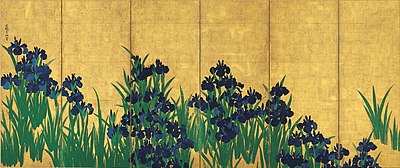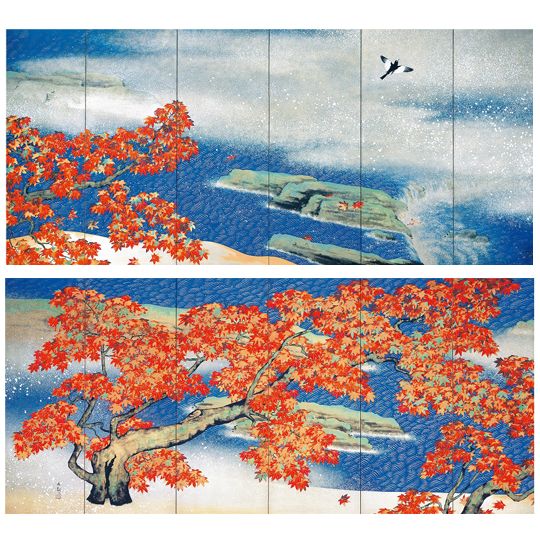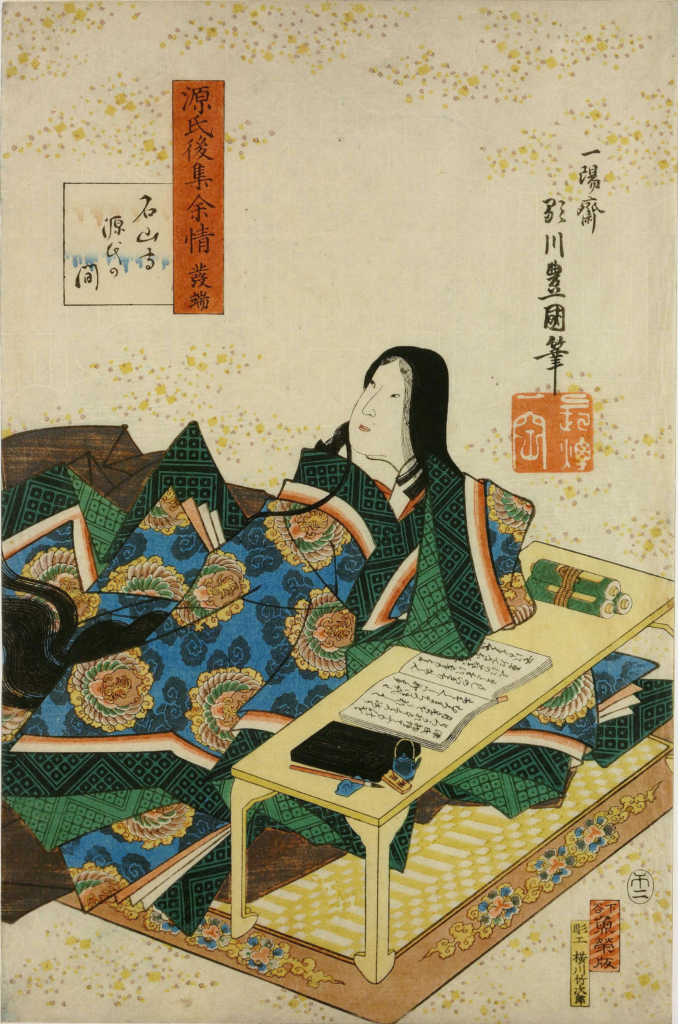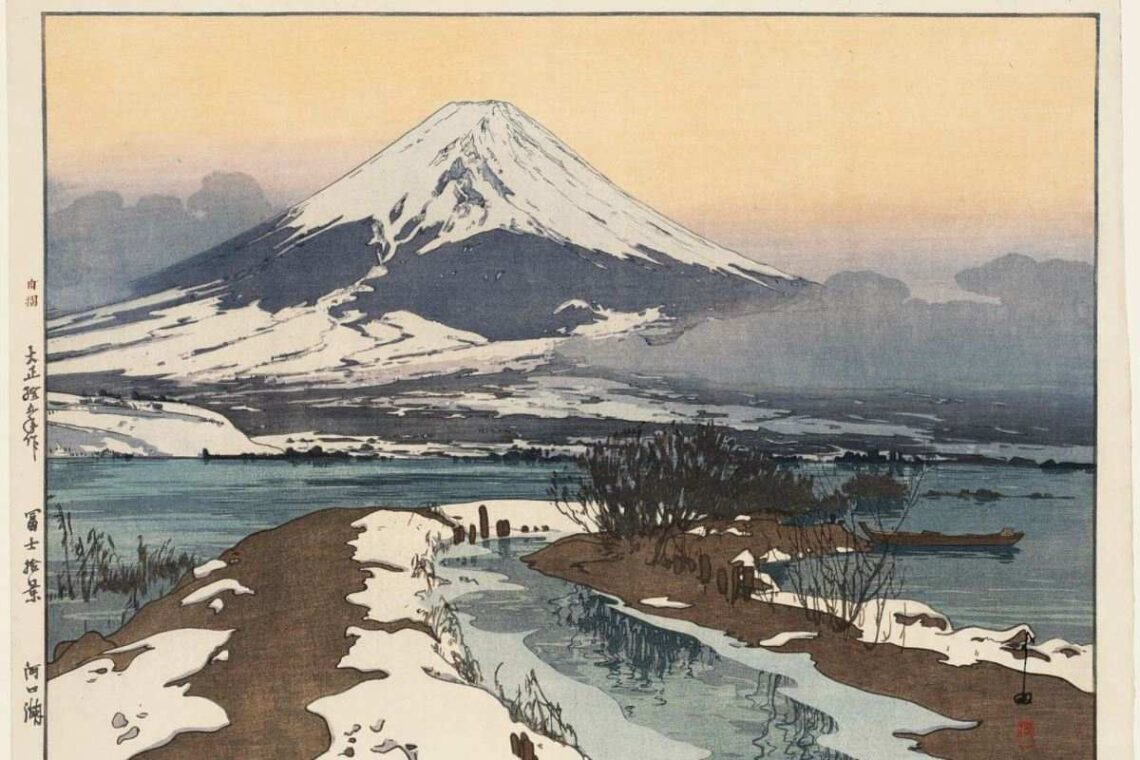Greetings, art aficionados! Buckle up for a thrilling ride through the mesmerizing world of Japanese art. We’re about to embark on a journey that will teleport you through time, culture, and the sheer brilliance of human creativity. Get ready to meet the rockstars, the legends, and the rebels of the famous Japanese paintings. Let’s dive into the stories behind 10 masterpieces that’ll make your jaw drop and your heart skip a beat.
1. “The Great Wave off Kanagawa” by Katsushika Hokusai

| Date Completed | Some period between 1830 and 1833 |
| Dimensions | Approximately 10 x 14 inches |
| Location | Sumida Hokusai Museum in Tokyo, Japan |
First up, we have the heart-thumping, adrenaline-pumping “The Great Wave off Kanagawa” by none other than Katsushika Hokusai. Imagine you’re catching a wave in the Pacific, and suddenly Mount Fuji photobombs your epic ride. This woodblock print isn’t just artwork; it’s Mother Nature giving you a high-five with her most furious wave, all while Fuji strikes a pose in the background. It’s like catching the wildest wave of your life without leaving your living room.
2. “Irises” by Ogata Kōrin

| Date Completed | Late 17th century |
| Dimensions | A pair of two-fold screens |
| Location | Nezu Museum in Tokyo |
Now, let’s saunter into a garden of perpetual spring with Ogata Kōrin’s “Irises.” Picture this: you’re sipping tea under a golden sun, surrounded by irises that are so vibrant they make the rainbow jealous. Kōrin didn’t just paint flowers; he bottled the very essence of a perfect spring day. It’s like having a secret garden in your home, minus the need for watering which makes it in the second in the list of famous Japanese paintings.
3. “Fūjin Raijin-zu” by Tawaraya Sōtatsu

| Date Completed | Early 17th century |
| Dimensions | A pair of six-fold screens |
| Location | Kyoto National Museum |
Hold on to your hats because we’re about to face off with the OG gods – Fūjin and Raijin. Tawaraya Sōtatsu turned the heavens into a six-fold screen showdown. Winds are swirling, thunder is crashing, and you can almost feel your hair standing on end. It’s like witnessing a divine wrestling match, and you’ve got front-row seats in the celestial arena.
4. “Autumn Leaves” by Yokoyama Taikan

| Date Completed | 1928 |
| Dimensions | A four-panel folding screen |
| Location | Kyoto National Museum |
Let’s switch seasons, shall we? Yokoyama Taikan’s “Autumn Leaves” is like stepping into a painting that’s also a toasty hug from Mother Nature. Imagine you’re crunching through leaves, the air is crisp, and you’re wrapped in the warm embrace of fall. It’s like having an autumnal escape route in your living room whenever you need a cozy scene.
5. “White and Red Plum Blossoms” by Ogata Kōrin

| Date Completed | 1710-1716 |
| Dimensions | A pair of two-fold screens |
| Location | MOA Museum of Art in Atami |
Now, let’s shift gears and embrace the art of simplicity with Ogata Kōrin’s “White and Red Plum Blossoms.” It’s not just an image; it’s a lesson in elegance. White and red plum blossoms waltzing against a gold-leaf background – it’s like having a masterclass in understated beauty. Who knew minimalism could be this breathtaking?
6. “Night Rain at the Double-Shelf Stand” by Utagawa Hiroshige

| Date Completed | 1857 |
| Dimensions | A ukiyo-e woodblock print |
| Location | Metropolitan Museum of Art in New York |
Ever wondered what a rainy night in old Edo looked like? Utagawa Hiroshige paints that picture for you in “Night Rain at the Double-Shelf Stand.” Raindrops are tap-dancing on the roofs, lanterns are flickering, and you’re right there, experiencing the poetry of a rainy night in Japan. It’s like having a front-row seat to the most cinematic rainstorm in history.
7. “Portrait of the Zen Monk Daruma” by Sesshū Tōyō

| Date Completed | Early 16th century |
| Dimensions | Hanging scroll |
| Location | Tokyo National Museum |
Time to Zen out with Sesshū Tōyō’s “Portrait of the Zen Monk Daruma.” Picture this: you’re in a serene temple, and there’s Daruma, the Zen master, giving you the most calming side-eye. The ink brushwork is so zen, you might just achieve enlightenment by staring at it. It’s like having a meditation session with the master himself, minus the pressure to sit cross-legged.
8. “Lady Murasaki Writing at Her Desk” by Tosa Mitsuoki

| Date Completed | 1750s |
| Dimensions | Color on paper |
| Location | Honolulu Museum of Art |
Let’s step into the world of literature with Tosa Mitsuoki’s “Lady Murasaki Writing at Her Desk.” Picture Lady Murasaki, the literary genius behind “The Tale of Genji,” scribbling away in her quiet corner. The soft colors and attention to detail make it feel like you’ve stumbled upon a secret writer’s nook. It’s like having a cup of tea with Lady Murasaki while she spills the tea on her latest plot twist.
9. “Nihonga Masterpiece” by Tomioka Tessai

| Date Completed | Early 20th century |
| Dimensions | Hanging scroll |
| Location | Private collections and exhibitions worldwide |
Fast forward to the 20th century, where Tomioka Tessai throws tradition a curveball with his “Nihonga Masterpiece.” It’s like Tessai decided to have a painting party, inviting colors and shapes to dance together in glorious chaos. The result is a riot of expression that’s as unpredictable as a rollercoaster ride.
10. “Horse and Trainer” by Kano Sansetsu

| Date Completed | Early 17th century |
| Dimensions | A six-fold screen |
| Location | Tokyo National Museum |
Let’s wrap up our list of famous Japanese paintings with Kano Sansetsu’s “Horse and Trainer.” This isn’t just a painting; it’s a symphony of motion frozen in time. Picture a majestic horse, muscles rippling, and a trainer caught mid-command. It’s like having a snapshot of equine elegance that transcends centuries.
Frequently Asked Questions
Who is the best painter in Japan?
Katsushika Hokusai, a well-known figure in Japanese art, is renowned for his ukiyo-e style works created with artist paint and wood blocks.
Which Japanese water painting is famous?
The Great Wave, also known as Under the Wave off Kanagawa by Katsushika Hokusai, is one of the most well-known pieces of art in the entire world and is arguably the most recognizable piece of Japanese art.
What is Japanese painting art called?
Nihonga roughly translates to “Japanese painting,” and is a broad word for traditional Japanese painting. The phrase is now widely used originally coined during the Meiji era to distinguish Japanese painting from Western-style oil painting.
What are examples of Japanese art?
The Japanese art forms of ink calligraphy, Sumi-E (traditional ink paintings), Ukiyo-e (woodblock prints), and Nihonga are some of the famous Japanese art.
Conclusion
In the grand tapestry of Japanese art, these famous Japanese paintings are the stitches that bind history, culture, and creativity into a vibrant quilt. Each painting is a passport to a different era, a different emotion, and a different facet of the human experience. So, the next time you find yourself in the presence of one of these masterpieces, don’t just look; dive in. Let the stories they tell whisk you away on a magic carpet ride through the heart and soul of Japan. Art, after all, is the truest time machine we’ve got.













